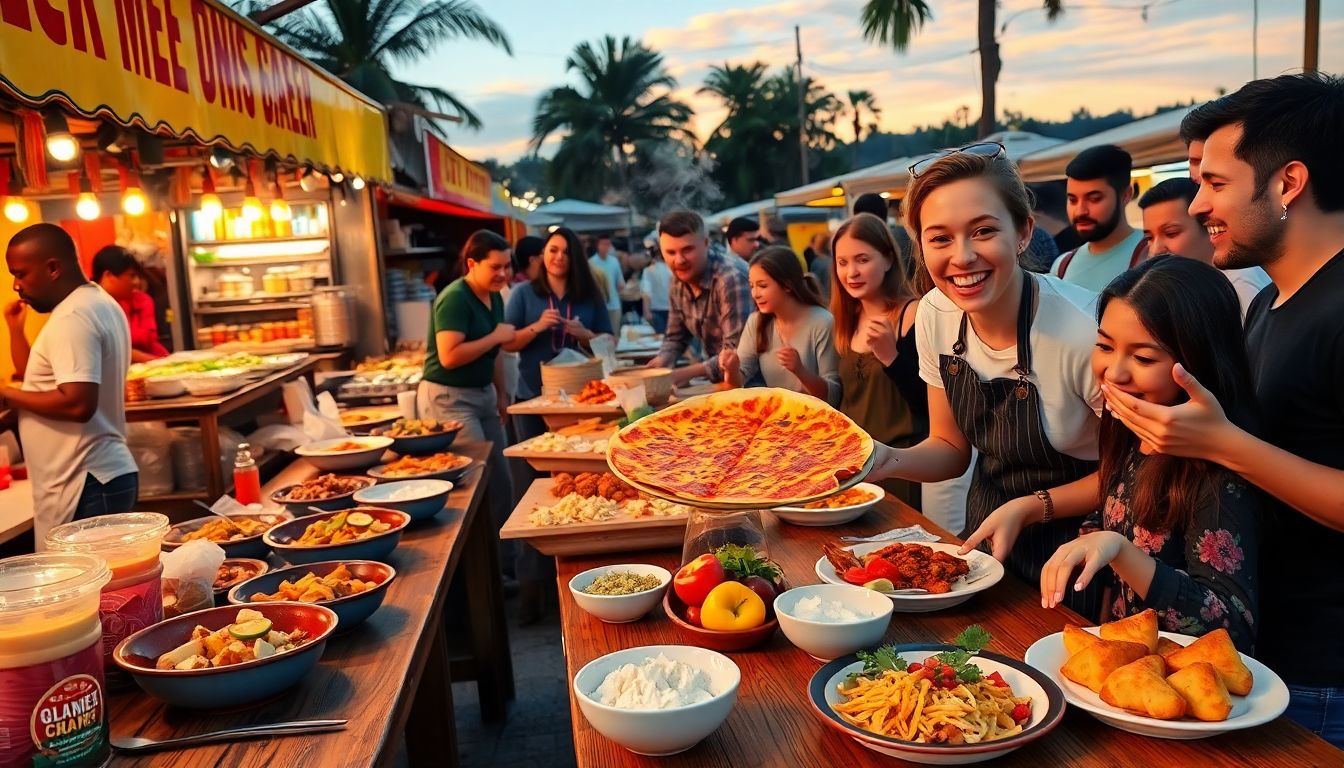
Ultimate Guide to Food Challenges: Test Your Limits and Discover New Flavors
Introduction
Food challenges are taking over social media and food scenes around the globe. People love the excitement of trying to eat a gigantic burger or spicy hot wings, often on camera. These challenges create a sense of community and can turn simple eating into a fun competition. But they also come with risks for health and safety. This guide aims to walk you through everything you need to know about food challenges, from how to prepare to how to stay safe while having fun.
What Are Food Challenges? An Overview
Food challenges are special eating feats that push limits. They can involve eating large amounts of food, spicy foods, or unusual ingredients. Most started as casual contests and grew into viral sensations online. Today, millions tune in to watch or participate.
Types of Food Challenges
Large Quantity Challenges
These are the most popular. They require eating massive amounts of food in a set time. Think of a giant burger, a mountain of fries, or a huge pizza. People usually do these for bragging rights or to entertain.
Spicy Food Challenges
These test how well someone handles heat. Think of eating super spicy wings coated in Carolina Reaper sauce or sampling spicy noodle bowls. Many enjoy the rush and the challenge of conquering intense heat.
Unique Ingredient Challenges
Some challenges focus on rare or unusual foods. Examples include eating exotic fruits like durian or dishes made with strange ingredients. These often showcase a culture or culinary tradition.
Combination Challenges
Mixing elements from different challenge types makes for even tougher tests. Imagine eating a spicy, large burger or a dish with strange ingredients under time pressure.
Popular Food Challenge Events & Viral Examples
The Nathan’s Hot Dog Eating Contest is famous worldwide, drawing thousands. Online videos like the “One Chip Challenge” or “Spicy Noodle Challenge” often go viral overnight. Social media helps these trends spread fast, inspiring many to try their hand at them.
Preparing for a Food Challenge
Before jumping in, do some homework. Understand your limits and know your body. Talk to a health professional if you have doubts about your health or existing conditions. Ignoring this can lead to serious problems.
Physical Preparation
Hydrate well days before the event to stay energized. Follow a balanced diet and avoid heavy eating right before. Mental focus is just as important—stay calm and visualize success. Watch for signs you’re pushing too hard, like stomach pain or dizziness, and stop if needed.
Practical Tips & Safety Measures
Start slow and pace yourself. Don’t rush — quick eating increases choking risks. Use proper utensils if needed, and keep water handy. Always listen to your body. If you feel unwell, stop immediately and get help if necessary.
Equipment & Environment
Choose a comfortable spot where you won’t be disturbed. Keep water nearby for cleansing or swallowing issues. Use napkins to wipe away spills and dispose of trash properly. These simple steps make the experience smoother and safer.
How to Successfully Complete a Food Challenge
Success often depends on good planning. Break the task into smaller parts, and pace yourself. Have a timer ready to keep track. Don't forget to engage with friends or the online community for motivation—they can push you further.
Tips from Experienced Participants
Many successful challengers recommend starting slow and building up endurance. Practice with smaller portions before the big event. Learn from failures—if you vomit or feel sick, don’t ignore it. Adjust your approach next time.
Psychological Preparedness
Stay positive and visualize your success. Focus on the finish line, not the discomfort. Building mental resilience helps you stay determined when it gets tough.
Post-Challenge Recovery
After finishing, take small sips of water and rest. Eat light meals afterward to help digestion. Remember, food challenges are supposed to be fun, not a health risk. Keep moderation in mind to avoid long-term damage.
The Impact of Food Challenges: Pros and Cons
Food challenges can be a way to connect and showcase skills, but they also carry risks. On the plus side, you can gain fame and meet new friends. They push personal limits and create fun memories.
However, overdoing it can cause health issues like choking, stomach pain, and dehydration. Some participants develop unhealthy eating habits or body image concerns. Experts advise moderation and listening to your body.
Legal & Ethical Considerations
Check local laws about organized eating contests. Ensure the challenge doesn’t encourage dangerous behavior. Promoting safe participation protects everyone involved.
Making Food Challenges Safer and More Enjoyable
Stay responsible by choosing challenges suited for your body. Focus on fun, not just winning. Incorporate ethical practices, avoiding overly dangerous or unhealthy stunts. Keep challenges inclusive—they should be enjoyable for all skill levels.
Conclusion
Food challenges are a fun way to test your limits, discover new flavors, and connect with others. Preparation and safety are key, so respect your body and know when to stop. Remember, challenging yourself should be about enjoyment, not risking health. With proper planning, food challenges can be a safe and exciting part of culinary exploration and entertainment. Push your boundaries — but always do so responsibly.

